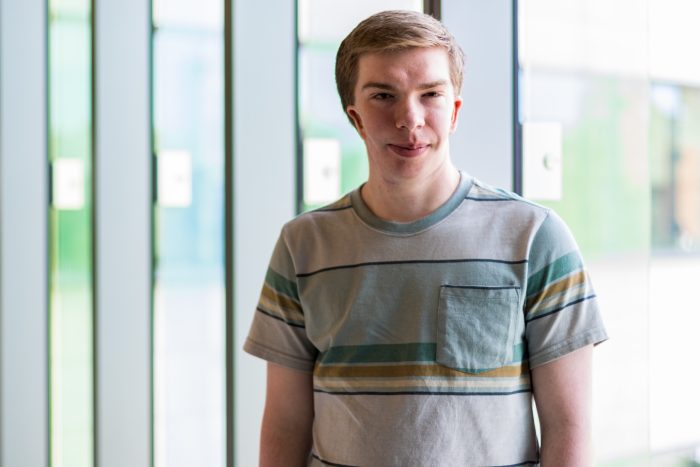 From day one, 21-year-old Sean Gallagher has been able to command a room. He jokes that it’s because he has a flair for the dramatic; it could also be because of his bright and infectious personality.
From day one, 21-year-old Sean Gallagher has been able to command a room. He jokes that it’s because he has a flair for the dramatic; it could also be because of his bright and infectious personality.
Sean was born with a facial difference, and his medical journey has been long and complex. MaryJo Gallagher and her husband David knew their son would be born with a small jaw, but the extent of Sean’s condition was beyond what they had envisioned. Immediately after the delivery, Sean was whisked away by a frenzied team of doctors and nurses.
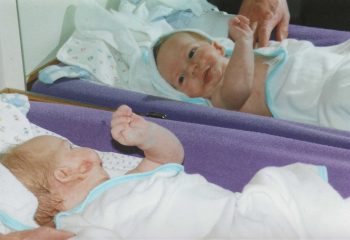 The next couple days were a blur of emotions as the couple grappled with their son’s condition and what it meant for his development. They had many questions, but not nearly enough answers.
The next couple days were a blur of emotions as the couple grappled with their son’s condition and what it meant for his development. They had many questions, but not nearly enough answers.
Dr. Michael Cunningham, division chief and medical director of Seattle Children’s Craniofacial Center, said he’ll never forget the first time he met Sean’s family. Sean was only 2 days old at the time. Cunningham went to visit them at the hospital where Sean was delivered.
“I was standing across the bed talking to Sean’s mom and said, ‘Everything is going to be okay,’” Cunningham said.
MaryJo said she’ll never forget that day either. She said it was like a physical weight had been lifted off their shoulders. They felt hopeful.
“He’s a family hero,” MaryJo said. “He explained to us about Sean’s condition. He knew right away what it was. We were so appreciative of him reassuring us. This is not the road we would have chosen for our little boy, but we are glad we are on it together.”
A lifetime at Seattle Children’s
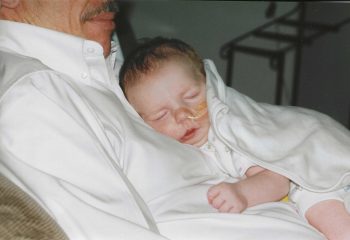 Sean has been a life-long patient at Seattle Children’s. He was transferred to Seattle Children’s at only 2 weeks old. Sean was born with bilateral craniofacial microsomia, a birth defect that can affect the jaw, ears and eyes. Sean was born with a significantly smaller jaw, which caused breathing and feeding issues early on in his life.
Sean has been a life-long patient at Seattle Children’s. He was transferred to Seattle Children’s at only 2 weeks old. Sean was born with bilateral craniofacial microsomia, a birth defect that can affect the jaw, ears and eyes. Sean was born with a significantly smaller jaw, which caused breathing and feeding issues early on in his life.
To date, Sean has undergone 17 surgeries at Seattle Children’s to address various issues affecting his hearing, vision, and most significantly, his jaw.
“He’s lived his entire life essentially with no chin and without being able to bring his teeth together,” Dr. Mark Egbert, division chief of Pediatric Oral and Maxillofacial Surgery and team member of Seattle Children’s Craniofacial Center, said. “I can’t imagine not being able to chew. He’s had significant challenges throughout his life, and more surgical procedures than 99.9% of people.”
Sean doesn’t remember toddling through the halls of Seattle Children’s when he was a baby, but he remembers the smiling faces of his care team. He has known some of his doctors and nurses for as long as he can remember, including Cunningham and Egbert. He has a deep level of trust he in them – a connection that has formed over the course of 21 years as their patient.
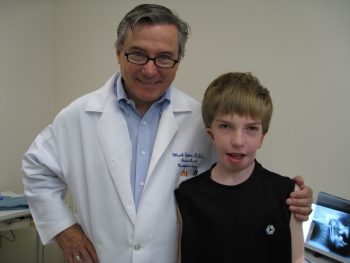
“They’ve always seen me as a person,” Sean said. “They cared enough about me to build a relationship with me. Not only did they address my physical differences, but they thought about what would give me the best life possible.”
Seattle Children’s Craniofacial Center treats thousands of children with conditions from cleft lip and palate to rare syndromes. The Craniofacial Center brings together more than 50 experts who all specialize in caring for children with craniofacial differences. Together, they create an individualized treatment plan for every child.
“There are many places that treat patients like Sean, but one of the many advantages of Seattle Children’s is our well-coordinated care team,” Egbert said. “Kids like Sean need specialties including, pediatrics, speech, audiology, craniofacial plastic surgery, oral and maxillofacial surgery, otolaryngology, neurosurgery, sleep medicine, OT/PT, nutrition, social work, nursing and orthodontics, to name a few; all of those services are contained within Seattle Children’s Craniofacial team. There isn’t a thing our patients might need that we don’t have. We set the bar for craniofacial centers.”
Standing out
Sean says from the outside, his experience must seem alien to other people, but it’s fundamentally been the same as everyone else’s, albeit a little more complicated. He had friends, played sports and excelled in school. He would argue that his life has been relatively normal, although that’s not a word used often by his family.
“I have a saying borrowed from a wise surgical floor nurse,” MaryJo said. “’Normal is just a setting on your dryer.’ We prefer to use the word typical.”
Throughout his life, Sean has stood out. When he would walk into a room, he knew people would stare for what he described as, “slightly longer than should be necessary.” He usually describes things in such a way, with a warm smile and sarcastic laugh. He doesn’t sugar-coat his experiences, and he’s refreshingly open about it.
A transformative surgery
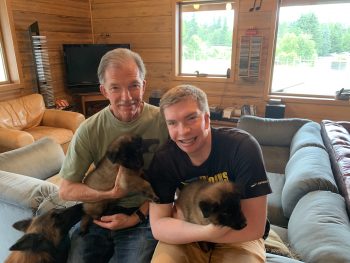 In July, Sean underwent his last surgery at Seattle Children’s.
In July, Sean underwent his last surgery at Seattle Children’s.
“The surgery will give him better speech, breathing, eating and oral health,” Egbert said. “It’s a complex surgery and dramatically changes the position of the jaws.”
Both his upper and lower jaws were repositioned, moving out his upper jaw and moving forward his lower jaw an inch. After the surgery, Sean was able to, for the first time in his life, bring his front teeth together. The surgery also gave him something else he’s never had – a chin.
“The surgery was a culmination of a team effort,” Egbert said. “I’m blessed to work here. To be able to improve the quality of life for a child is the greatest gift.”
Every aspect of the surgery was carefully and meticulously planned before Egbert ever stepped foot in the operating room. Dental models and computerized tomography (CT) scans were digitally imported into a computer program where Egbert planned the movements he’d make in the operating room. Using 3D models of Sean’s skull, he also planned where he would make cuts in Sean’s jaw to be sure to avoid the nerves.
The day of the surgery, Sean and his family were nervous, but they were also excited for what would be their last time in the waiting area.
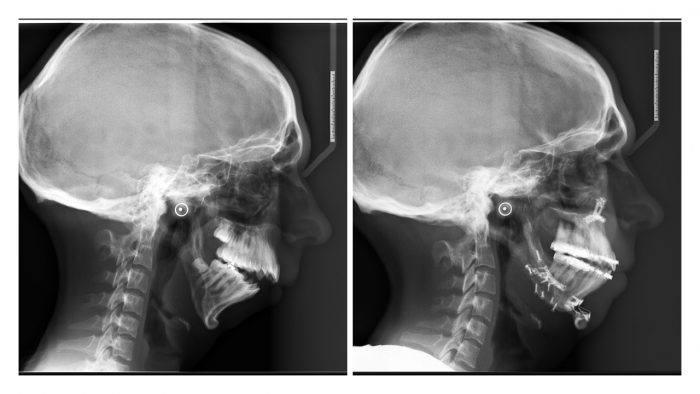
The surgery was a success. Although the recovery process would take about eight weeks, the surgery improved the function of Sean’s jaws and gave his face more typical proportions.
“Sean has been through a lot,” said Egbert. “I’ve known him since he was 4 years old. He’s adapted incredibly well to having a facial difference, and he’s never let how the world perceives him affect his life. He’s always had an exciting world ahead of him.”
Life after Seattle Children’s
Today, Sean is preparing for a new chapter of his life. He’s embarking on his junior year at Stanford, and is studying abroad in Santiago, Chile. This summer will be the first time he won’t have to make a trip back to Seattle Children’s for care. He’s finally putting that phase of his life behind him, and he’s excited about the opportunity to do something he’s never done before – blend in.
“I’m excited to walk into a room and not immediately have people stare at me,” said Sean.
It’s something his mother lovingly disagrees with.
“His personality is so bright,” MaryJo said. “He’ll never blend in. He shines. He’ll always stand out.”
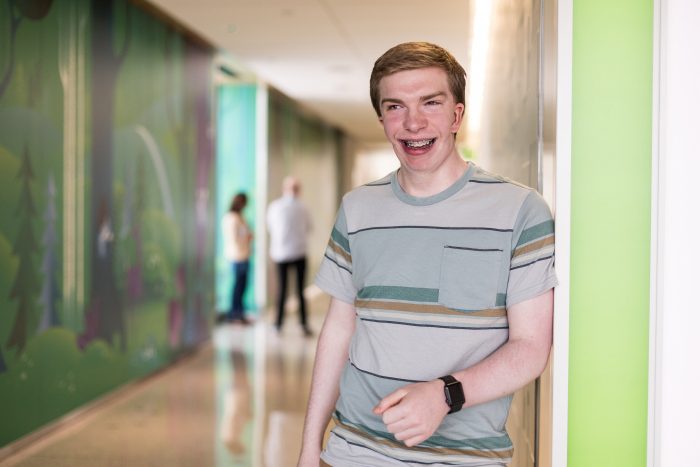 For Sean, the surgery meant a better quality of life. Being able to bite into a piece of pizza or chew gum was an exciting prospect, and something he’s still mastering. He was apprehensive about how the surgery would alter his appearance, but he’s adjusting.
For Sean, the surgery meant a better quality of life. Being able to bite into a piece of pizza or chew gum was an exciting prospect, and something he’s still mastering. He was apprehensive about how the surgery would alter his appearance, but he’s adjusting.
“If I say I think I look good, I would be implying that I didn’t like my appearance before,” Sean said. “And that’s not the case. It’s something I’ve been going back and forth about. I do find myself smiling a lot more now.”
While he’s excited to blend in more than he has ever before, he wants other people with differences to know it’s okay to stand out.
“Don’t just aspire to fit in,” Sean said. “Don’t be afraid of what makes you different.”
Although Sean may have graduated from Seattle Children’s, he made a mark on his care team.
“It was very clear early on that Sean was going places,” said Cunningham. “He was only days old when we first met. It’s very rewarding to see where he is today. I’ve watched as he’s moved through different phases of his life. It’s a lot like parenting. You want the best for them.”
Sean and his family won’t soon forget the memories and friends they’ve made at Seattle Children’s.
“He’s a Seattle Children’s success story,” MaryJo said. “We’re forever grateful to the hospital, but we’re going to be happy to be alumni,” she said laughing.
For Sean, his hopes for the future are limitless.
“I’m excited to move on and pursue things I’m passionate about, like international relations and human rights. I’m also terrible at rolling my R’s, so I should probably work on that while I’m in Chile speaking Spanish in my classes,” Sean said with a bright smile. “I am excited for people to see me for me, and not my facial difference.”

